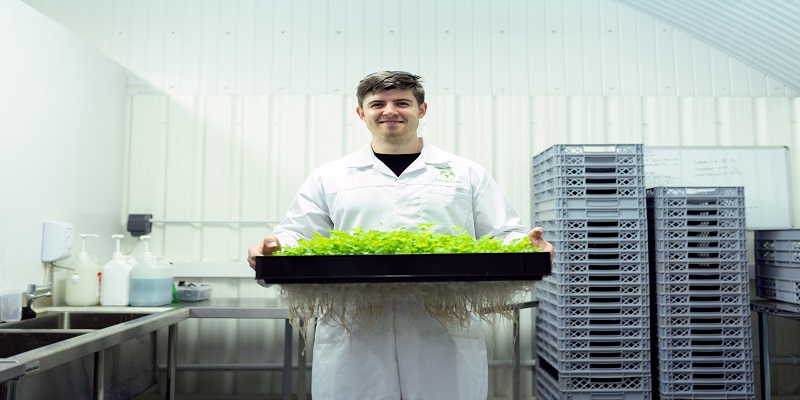When it comes to genetically modified organisms (GMOs), the topic is often met with mixed emotions. Some hail GMOs as the answer to world hunger, while others view them as a threat to our health and environment. So, what’s the truth? In this blog post, we’ll dive into the facts and fiction surrounding GMOs, explore their potential benefits and risks, and discuss what the future may hold for these controversial creations. Get ready for an enlightening journey through one of today’s most hotly debated issues.
Introduction to Genetic Modification
The term “genetically modified” (often abbreviated as GM) refers to the process of manipulating genes in a living organism using biotechnology. The goal of this process is to introduce new traits or characteristics to the organism. Once a plant or animal has been genetically modified, all of its offspring will also carry the modification.
Humans have been manipulating the genetics of plants and animals for centuries through traditional breeding methods. For example, farmers have bred crops to be more resistant to pests and disease, and livestock breeders have developed breeds that are better suited for specific purposes, such as milk production or meat quality. However, these methods can take many years to produce desired results.
With the advent of genetic engineering in the 1970s, it became possible to directly alter the DNA of living organisms. This technique has been used to create GM crops and animals that display desirable traits much faster than traditional methods.
Since then, GM crops have become increasingly common worldwide. In 2018, 18% of global farmland was planted with GM crops
The most common GM crops are soybeans, corn, cotton, and canola. These crops have been engineered to be resistant to herbicides and/or pests, or to produce their own insecticide. Although GM crops are widely cultivated, there is still much public confusion and debate about their safety. Some people worry that consuming GM foods could lead to negative health effects in humans.

What are Genetically Modified Organisms (GMOs)?
A GMO is a plant, animal, microorganism, or other organism whose genetic makeup has been modified using recombinant DNA technology. This relatively new science allows DNA from one species to be inserted into another, creating combinations that would not occur in nature or through traditional crossbreeding methods.
Since the commercialization of GMOs in the mid-1990s, they have been controversial. Some believe that GMOs are essential to meeting the world’s growing food needs, while others are concerned about their potential health and environmental effects.
Proponents of GMOs argue that they can help increase crop yields and resist pests and herbicides. They also claim that GMOs are more nutritious than non-GMO foods and can be produced with less reliance on pesticides.
Opponents of GMOs contend that these organisms pose risks to human health and the environment. They argue that we don’t yet know enough about the long-term effects of consuming GM foods or exposing ourselves to GM crops grown in fields sprayed with herbicides. They also say that GMO crops can contaminate non-GMO crops and lead to the emergence of “superweeds” resistant to herbicides.
Benefits of GMOs
The debate around the use of GMOs is intense and ongoing. Opponents of GMOs say that they are unsafe for human consumption and environmental release, and that they can lead to the development of so-called “superweeds.” Proponents argue that GMOs are no different than traditionally bred crops, and that they offer significant benefits in terms of yield, drought tolerance, and pest resistance. So what’s the truth?
There is no definitive answer, but there are some things we know for sure. First, GMOs are not inherently unsafe. The overwhelming majority of scientific evidence indicates that GM foods are safe to eat and do not poses any greater risks than their non-GM counterparts. Second, while there is always a potential for unintended consequences when releasing new organisms into the environment, the rigorous testing required by regulatory agencies helps to minimize these risks.
GMOs offer real benefits to farmers and consumers alike. GM crops have been shown to increase yields while using less water and pesticide inputs. They also hold promise for developing regions where poverty and hunger are endemic, as they can be engineered to resist disease and pests native to those areas. In a world where food security is an increasingly pressing concern, GMOs represent a powerful tool in our fight against hunger.

Controversies Surrounding GMOs
The debate around genetically modified organisms (GMOs) is one that has been waged for years. On one side are those who believe that GMOs are a key to feeding the world’s growing population; on the other are those who believe that GMOs are dangerous and should be banned. The truth, as with most things, lies somewhere in the middle.
There are many concerns that have been raised about GMOs. One is that they may cause allergies. Another is that they may lead to the development of antibiotic-resistant bacteria. And yet another is that they may have negative effects on the environment.
Despite these concerns, there is no evidence that GMOs are unsafe for human consumption. In fact, many of the foods we eat every day – such as corn, soybeans, and canola – are all genetically modified. And while it’s true that more research needs to be done on the long-term effects of GMOs, there is no reason to believe that they will be any more harmful than the foods we currently eat.
Regulation of GMOs
The regulation of GMOs is a complex and controversial topic. There is currently no consensus on how to regulate GMOs, and there are a variety of different approaches being taken by different countries.
There are a number of different arguments for and against the regulation of GMOs. Those in favor of regulation argue that GMOs should be subject to the same safety testing and regulations as other food products, as they have the potential to pose risks to human health and the environment. Those opposed to regulation argue that GMO crops have been safely cultivated and consumed for many years, and that there is no evidence that they pose any risks to human health or the environment.
The debate over the regulation of GMOs is likely to continue for many years to come. In the meantime, it is important to be informed about the facts surrounding GMOs, so that you can make your own decisions about whether or not to support their cultivation and consumption.
Technical Requirements for Cultivating GMOs
To cultivate a GMO, farmers must first obtain the appropriate seeds from a seed company. The next step is to plant the seeds and care for the crops as they grow. Farmers must also ensure that their crops are not contaminated with non-GMO plants, as this can impact the safety and quality of the food products derived from the crops.
In order to sell their GMOs, farmers must comply with all applicable government regulations. These regulations vary by country, but typically involve registering the GMO with the appropriate government agency and meeting certain labelling requirements.
Future Opportunities with GMO Technology
Looking ahead, there are many potential applications of GMO technology that could have a transformative impact on the world. One exciting possibility is using GMOs to create more sustainable and resilient crops that can better withstand climate change and other environmental stresses. Additionally, researchers are working on ways to use GMOs to produce pharmaceuticals and other valuable compounds in plants, which could help lower costs and improve access to essential medicines.
Other potential applications of GMO technology include developing crops that require less fertilizer or water, or that can actually help clean up contaminated soil or water. Ultimately, the possibilities for using GMOs to improve both agriculture and the environment are vast – and we are only just beginning to scratch the surface of what’s possible.
Conclusions
There is a lot of misinformation out there about GMOs. Hopefully, this article has helped to clear some things up. GMOs have the potential to solve many of the world’s food insecurity issues, but they are not without their critics. Only time will tell what the future holds for GMOs.”











